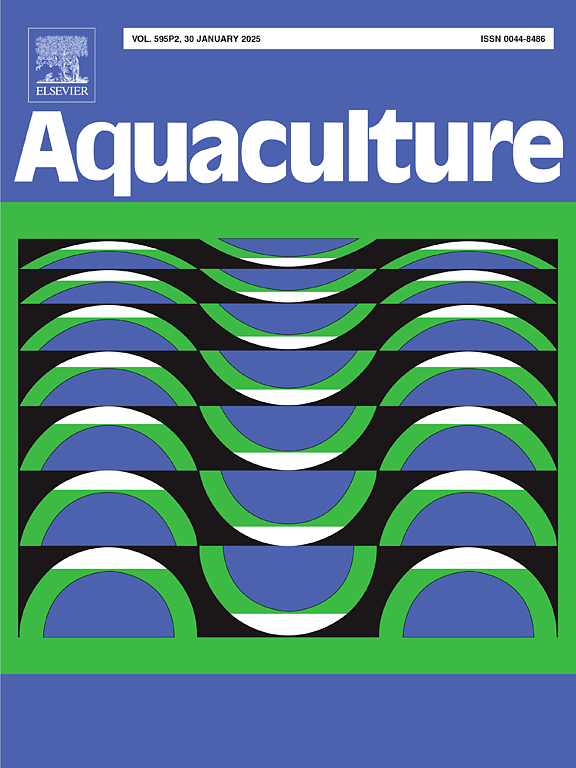Tetrahydropalmatine exhibits anti-parasitic activity: A novel control strategy against Enterocytozoon hepatopenaei infection in shrimp
IF 3.9
1区 农林科学
Q1 FISHERIES
引用次数: 0
Abstract
Hepatopancreatic microsporidiosis (HPM), caused by Enterocytozoon hepatopenaei (EHP), has emerged as a major threat to the shrimp aquaculture industry. However, no effective strategies have yet been developed to control the spread of this disease. In this study, we assessed the anti-EHP activity of ten monomeric compounds in Penaeus vannamei. The results showed that tetrahydropalmatine reduced the EHP copy number by 73.8 % at a concentration of 20 mg/L. In a therapeutic experiment, feeding EHP-infected shrimp a diet containing 0.1 % tetrahydropalmatine significantly lowered the EHP load. Additionally, the growth-related gene juvenile hormone esterase-like carboxylesterase 1 was significantly upregulated, while ecdysteroid-regulated protein and farnesoic acid O-methyltransferase were significantly downregulated, suggesting that tetrahydropalmatine may enhance the growth potential of EHP-infected shrimp. After 30 days of feeding, the EHP-infected shrimp's body weight in the groups fed with tetrahydropalmatine increased by 19.9 % compared to those fed with the normal diet. In a prevention experiment, healthy shrimp fed a diet containing tetrahydropalmatine and subsequently infected with EHP showed an increase in body weight by day 30 post-infection, compared to the control group, although this difference was not statistically significant. Tetrahydropalmatine can inhibit spore germination and electron dense disc formation, which may be an important reason for its suppression of EHP infection. Moreover, tetrahydropalmatine effectively inhibited the horizontal transmission of EHP, suggesting its potential to limit HPM outbreaks. These findings indicate that tetrahydropalmatine may serve as a feed additive for the treatment of HPM caused by EHP.
求助全文
约1分钟内获得全文
求助全文
来源期刊

Aquaculture
农林科学-海洋与淡水生物学
CiteScore
8.60
自引率
17.80%
发文量
1246
审稿时长
56 days
期刊介绍:
Aquaculture is an international journal for the exploration, improvement and management of all freshwater and marine food resources. It publishes novel and innovative research of world-wide interest on farming of aquatic organisms, which includes finfish, mollusks, crustaceans and aquatic plants for human consumption. Research on ornamentals is not a focus of the Journal. Aquaculture only publishes papers with a clear relevance to improving aquaculture practices or a potential application.
 求助内容:
求助内容: 应助结果提醒方式:
应助结果提醒方式:


